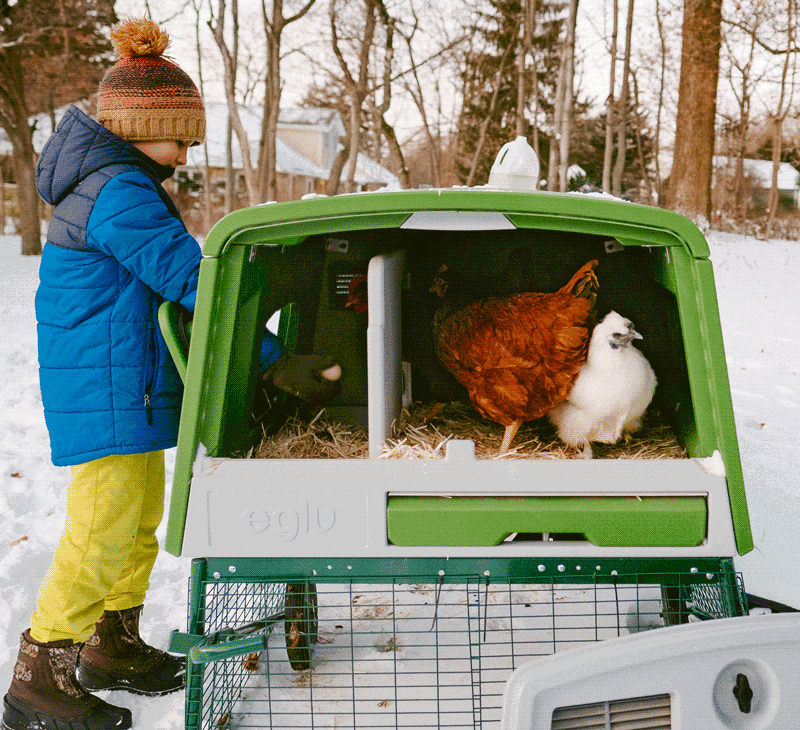How the Eglu Keeps Your Chickens Warm in Winter
In winter, one of the biggest concerns we see from our customers is: “how well is the Eglu going to keep my chickens warm?”. In this blog, we explain the science behind the Eglu’s carefully designed features, which ensure your chickens are kept nice and toasty in the colder months.
 Insulation
Insulation
Air is an amazing thermal insulator. Heat is conducted between an area of more heat to an area of less heat. The warmer molecules vibrate rapidly and collide with others, passing on energy. If the material the heat (in this case the body heat from the chickens inside the coop) is trying to pass through has few molecules in it then it will be harder for the heat to transfer through it. This is the case with air, and that is why it’s commonly used as an insulator in everything from walls and windows to cooking utensils and drinking flasks – and chicken coops!
The Eglus’ unique twin wall system captures air in a pocket between the inner and outer wall, taking full advantage of air’s great insulating properties. This solution stops the cold air from moving into the coop, and retains the warm air in the coop. The same process also keeps the chickens cool in summer by stopping the warm air from entering the coop and making it too warm.
Ventilation
Perhaps even more important than the coop’s insulating properties, is how well ventilated it is. If the coop doesn’t have good ventilation, you run the risk of either having a nasty draft if the coop has badly positioned vents or large holes and openings, or a build up of moisture if the coop is too tightly insulated. Both will prevent the chickens from staying warm on chilly winter nights, and can cause unpleasant respiratory illnesses.
The Eglu coops are designed to let air flow through the coop, but without creating an uncomfortable draft for the chickens. The vents are positioned in such a way that your pets won’t notice the fresh air flowing through the coop, but the warm air evaporating from the animals and their droppings will move through the vents and prevent any moisture.
How chickens keep themselves warm
Chickens, like many other non-migrating birds, have a layer of downy feathers under their visible plumage that they can fluff up to create air pockets close to their bodies. This will retain the heat, and will keep them warm during winter.
Chickens also have a high metabolic rate that will speed up even more during winter, helping to keep their bodies warm. This is why you might have to feed your chickens a little extra during the winter months.
Chickens are also able to decrease the blood flow to their bare legs to minimise loss of body heat. The overlapping scales on their feet and legs trap some warm air, so walking on snow and ice rarely causes chickens any discomfort. When roosting in the cold, the feet and legs are tucked in under the warm feather blanket, and the chicken might also tuck its head under a wing to get some extra body heat.
This entry was posted in Chickens